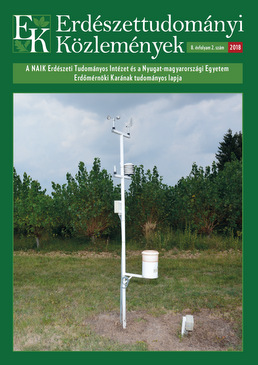Private forest ownwers in Hungary
Tamás Mertl & Endre Schiberna
Correspondence
Abstract
Based on the analysis of land registry data, it can be concluded that the land lots with forest area larger than 0.5 ha, classified as forest management area and not 100% state property is owned by 425 thousand individuals and 3 thousand organizations such as enterprises, municipalities, civil organizations and churches. This study is focusing on the analysis of individual owners and finds that the number of female and male owners is equal, but male owners own almost double the area than that of the female owners. More than half of the owners live in villages, one-fourth in small towns and one-fifth in large cities, while only a fraction of owners is living abroad or at unknown places. The average size of property is 1.85 ha, and the distribution of property sizes is strongly concentrated. On the one hand, one-third of the owners own less than 0.1 ha and their forests cover only 0.6% of the study area, while on the other hand, the owners with forest area larger than 10 ha have a 3.1% share in the number of owners and a 55.0% of the study area. Two-third of the owners owns forest only in one single land lot, and the same share of owners lives within a 10 km radius from their property.
Keywords: ownership title, ownership title deed, inheriting, concentration of property, land transactions
Open Acces
For non-commercial purposes, let others distribute and copy the article, and include in a collective work, as long as they cite the author(s) and the journal, and provided they do not alter or modify the article.
Cite this article as:
Mertl, T. & Schiberna, E. (2018): Private forest ownwers in Hungary. Bulletin of Forestry Science, 8(2): 113-126. (in Hungarian) DOI: 10.17164/EK.2018.026
Volume 8, Issue 2
Pages: 113-126
First published:
24 May 2018
Related content
1
More articles
by this authors
4
Related content in the Bulletin of Forestry Science*
More articles by this authors in the Bulletin of Forestry Science
* Automatically generated recommendations based on the occurrence of keywords given by authors in the titles and abstracts of other articles. For more detailed search please use the manual search.
